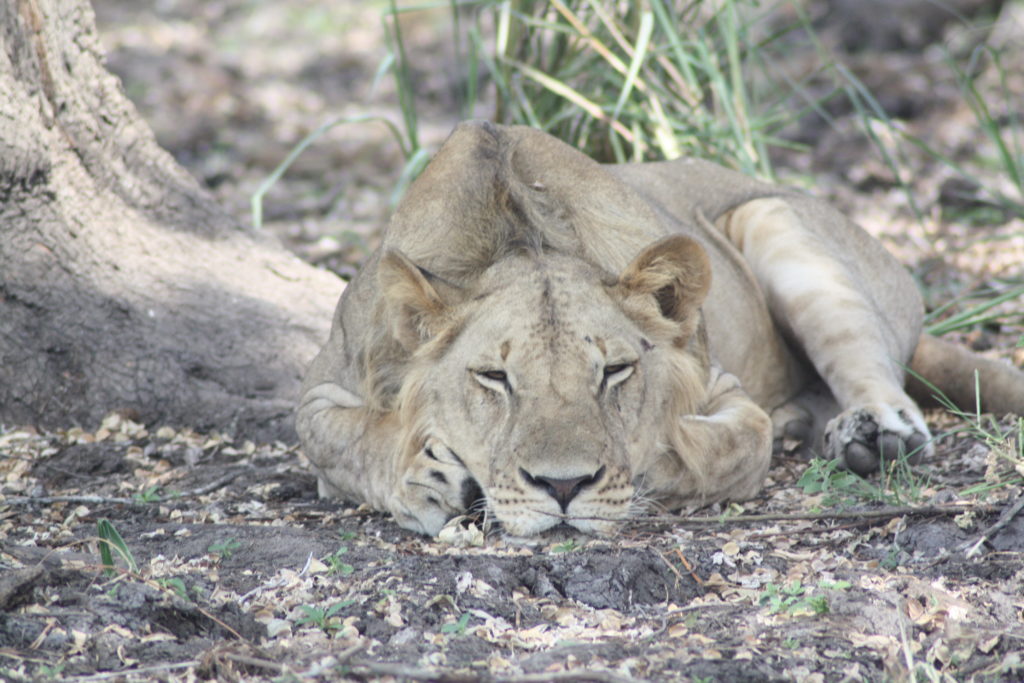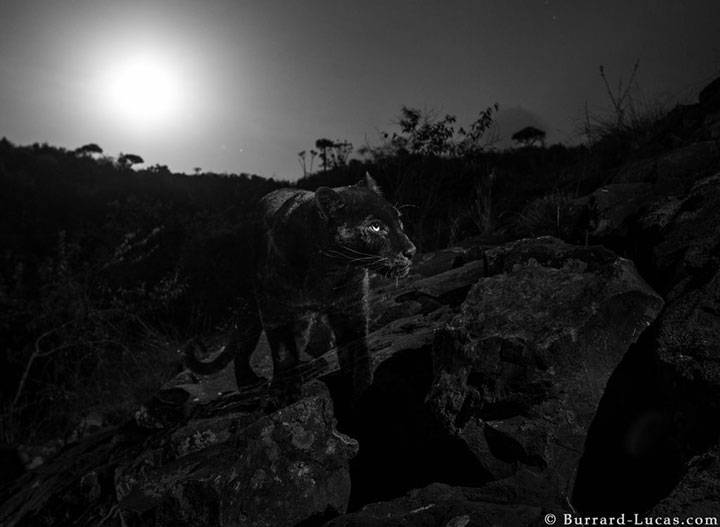Thought to be the first time, this albino panda was photographed in the world. While occasional pandas have been seen with brown rather than black patches on their body, this is thought to be the first time that an entirely white Panda has been seen.
Continue reading “Albino panda seen in the wild – extremely rare”News from the Hunting world
Lion trophies will not be banned from the UK
The British Conservative Party have gone back on a pledge to ban the import of lion trophies taken from hunting. In 2015 and 2017 the British government released statements stating that unless they saw a significant change in the hunting industry that this ban would come into place. According to widespread analysis there has been no change whatsoever, with a significant for the fall in numbers in that time. It should be noted that Zac Goldsmith, a prominent Conservative MP, has made a petition that 150 conservative MPs have signed that calls for this ban to go into effect.
Few British people hunt lions compared to certain other countries in the world and only an average of around six bodies are imported each year. However, the message it would send to the rest of the world would be highly important and would be seen as continuing the British line of supporting conservation worldwide.
The British government did state that this is constantly under review and lion bodies are only given the right to be brought back to the UK if they came from particular parts of the world. While I dislike the concept of hunting wild lions there are a few places, as I have argued in previous articles, where this is the only method to bring in enough money to continue to support the areas conservation. One such area is the Selous.
Cecil the Lion’s death bizarrely increased the number of British Hunters
Cecil the lion was killed a few years ago in a canned hunt (A lion raised in captivity, often allowed to be petted by tourists when young, released into a relatively small area, and usually killed within a few months) in South Africa. This hunting is totally unsportsmanlike and therefore does not seem to fit into the general ‘good sport’ rules of hunting. Lions are bred in captivity are often used financially to pose with tourists when they are young. When old enough they are released into a relatively small area, often without the skills to hunt for themselves, and are generally short by sportsman within a short period of time.
Despite the majority of the British population thinking that Cecil the Lion’s death was disgusting (as he was tempted out of a national park by meat being left out and then shot as soon as he walked across a line that he did not know existed) it would appear that this is not how it went across in hunting circles as it has had a significant impact with far more people going to take part in these sorts of unsportsmanlike hunts. While the number of lions hunted by Brits is significantly lower than the number hunted by Americans, we fall in 12th place in terms of the numbers of lion carcasses imported annually. This is not an area that I wish the UK to rate highly in the world.
Trump administration has reversed a ban on importing elephant body parts from hunts
Donald Trump has stated in the past that the hunting lobby was disgusting and it should be banned from bringing back trophies. Not long after Ryan Zinke, the interior secretary, reversed this position announcing that each one would be reviewed individually.
This is in response to a suit filed by the safari club and the NRA against the blanket ban. It should be noted that none of these people are unbiased observers. Trump’s two sons are avid hunters as is Ryan Zinke.
Both elephants and lions have in the last few decade lost much habitat, and in the case of lions gone through irregular poaching epidemics. They have gone from being relatively numerous: in the case of lions 400,000 in 1950 down to under 20,000 and elephants 3 to 5 million down to around 415,000. This kind of dramatic collapse of numbers show they are highly threatened and given the continual poaching and loss of habitat this threat is only likely to get worse.
Cost of melting permafrost and resulting release of methane and carbon dioxide from the Arctic calculated by study to be as much as 70 trillion dollars
The Arctic does, unfortunately, have a built-in exaggeration of any heating. The bodies and vegetation of inhabitants of the Arctic have been locked away in the Arctic permafrost for millennia. As the Earth warms this permafrost starts to melt for the first time in millenia releasing this huge store of global warming gases.
McDonald’s finally responds and reduces the plastic in their packaging
For the first time we as a family visited McDonald’s and were given paper straws and cardboard balloon stick holders, instead of the usual plastic versions of both.

Rhino hunter in the Kruger National Park appears to have been killed by elephant and then eaten by lions
As is well known globally, the Kruger National Park in South Africa has had a very serious problem with rhino poaching over the last decade or so. A significant proportion of the remaining wild white rhinos live with in the Kruger so it is not a surprise that this is where much of the white rhino poaching has gone on.
At the same time, there has been a significant issue of man-eating lions within the Kruger National Park.
Theresa May has no time for halting climate Armageddon because of Brexit
Recently the UK Prime Minister Theresa May made it completely clear that Brexit is taking up all of her attention. While it may be more immediate, climate change is clearly of greater threat.
Bolsorano, president of Brazil, update – further rainforest threat
I wrote a few months ago about the news that Bolsorano had been elected as the next president of Brazil. I talked about the things that he had promised to do that would be detrimental to the environmental condition in Brazil and potentially South America.
While it has taken a few months for him to start changing things, it is not encouraging.
Review of the Mountains of the Moon photography exhibition
For another month the Royal Geographical Society are holding an exhibition of photographs taken by a group of people who spent a considerable length of time exploring the Rwenzori mountains. The exhibition is in London, at the North end of Exhibition Road.
The British Conservative party are breaking a pledge to end lion trophy imports

Despite a pledge by the UK government in 2013 to halt lion trophy imports there are still roughly five a year being imported into the UK. While this doesn’t sound like much, a number of things need to be held in mind.
Black leopard sighting Kenya

Will Burrard Lucas, a British wildlife photographer, has taken the wildlife jackpot shot and managed to photograph a wild black leopard in Africa, in Laikipia Wilderness Camp in Kenya.
Her took the photo in Kenya, on a camera trap he had set up. Black leopards (as with jaguars, servals, tigers and other cats) are normal leopards which have an extremely rare recessive gene. Given that the gene in question is recessive it is rare that a leopard would have both parents carrying the recessive gene and so ends up black.
In specific parts of the world, black leopards are far less rare – on the Malaysian peninsula as much as half of the leopards are black. However, these leopards live in dark jungles which means there is more dark shadows for the leopards top hide in. This means that there is a higher advantage for black leopards, making them more likely to have many young.
While leopards are active mostly at night, and therefore black leopards can be easier camouflaged, for savannah leopards they need to be able to hide during the day. Although they mostly lie up a tree during the day, a black leopard is more visible.











